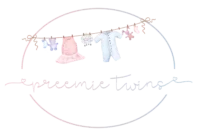Disclosure: This post may contain affiliate links, meaning we get a commission if you decide to make a purchase through our links, at no cost to you. Please read our disclosure for more info.
Your kindergartener is probably a ball of energy right now. And with that energy comes the potential for minor childhood injuries. But if you’re aware of the first aid protocol for common bumps and bruises, you’ll be prepared to help your child feel all better as soon as possible.
Cuts and Scrapes
If your child has been cut, apply pressure with a clean cloth until the bleeding slows. Rinse with warm water and apply antibacterial ointment, then cover with a clean bandage. If the wound was caused by an animal bite or scratch, you should also clean well with antibacterial soap. Consult a physician if you are unable to slow the bleeding after several minutes.
Minor Burns
Immediately hold the burned area under cool running water. If there are any small blisters, dress with antibacterial ointment cover loosely with clean gauze. Watch for signs of infection, such as redness, swelling, and pus, and seek medical attention if necessary. Go to the emergency room right away if burns are on the face or hands; are larger than 1/4 inch in diameter; or appear deep (with white or brown skin).
Splinter
If your child has gotten a wood or glass splinter, first wash the skin surrounding the splinter. Pull the splinter out with a pair of tweezers that have been cleaned with rubbing alcohol, then wash the skin again. If the splinter cannot be removed easily, try again the next day, but call the doctor immediately if signs of infection develop.
Insect Bite or Sting
No treatment is typically needed for children who are not allergic to insect bites or stings. However, if a stinger has been left, gently try to scrape it out with the edge of a credit card or other clean flat surface. Itching can be treated with over the counter hydrocortisone cream. According to Ladah Law, you should watch carefully for signs of allergy, including trouble breathing, severe cough, hives, or swollen lips and tongue.
Eye Trauma
If your child has been hit in the eye with a ball or other object, keep an eye out for severe pain, constant tearing, vision problems, and light sensitivity. If any of these occur, take them to the ER, where they can check for and treat scratches and contusions on the eye.
While it’s always scary when your young child is injured, having a stocked first aid kit, and knowing when to seek additional medical attention can help you easily weather the bumps and bruises of early childhood.
